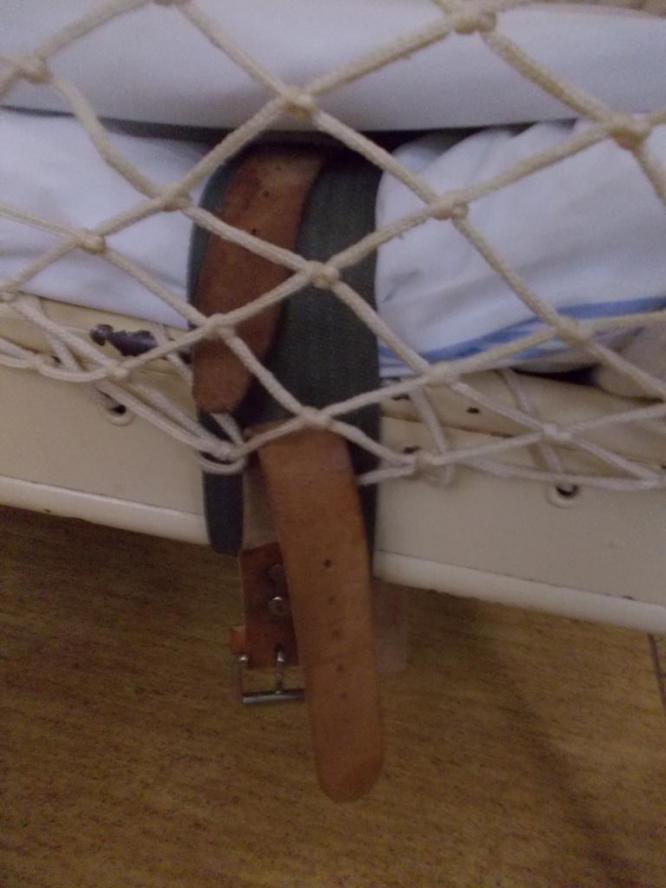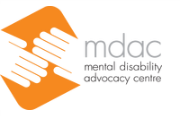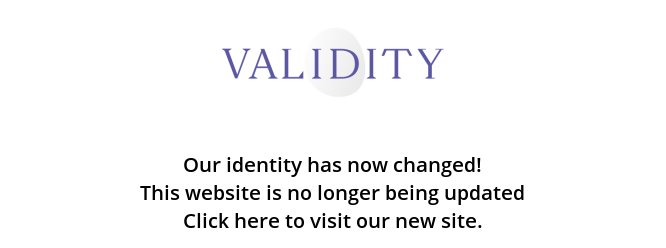5(B). Glossary
‘Cage beds’
MDAC uses the phrase ‘cage beds’ to mean to any form of enclosure around or attached to a hospital bed, irrespective of the material used to form the cage.
The Czech authorities use the term ‘cage beds’ to refer to a bed with metal bars and the term ‘net beds’ for a bed with netting (like a football net) around the sides and tops. Some mental health professionals use the euphemism ‘therapeutic bed’ to mean netted cage beds. MDAC’s term has been endorsed by the UN Committee against Torture which has noted that netted cage beds have “effects [that] are similar to those of [metal] cage-beds”.18
Metal cage beds were banned in psychiatric hospitals in 2004.19 All forms of cage beds were banned in social care institutions in 2011. Netted cage beds still exist in psychiatric institutions.
The report uses the term ‘cage bed’ consistently, because they are all designed for, and have the effect of, encaging human beings. Moreover, despite the legal label and material used, patients in Czech psychiatric hospitals themselves referred unprompted to ‘cages’ and ‘cage beds’ in interviews with MDAC. When referencing the position of the Czech government, the report uses the terms ‘metal cage bed’ and ‘netted cage bed’ simply to refer to the difference in material.
‘Physical restraints’
This term refers to a variety of straps and attachments which can be applied to beds in a hospital and applied to the limbs and/or torso of a patient with the intention of attaching the patient to the bed. Physical restraints include fabric or leather straps, handcuffs, manacles, and straightjackets attached to the structure of the bed. In some cases the term includes other rudimentary forms of restraint such as the use of sheets or towels to tie people to their beds or chairs, often in combination with chemical restraints.
‘Chemical restraints’
Chemical restraints include any medication which is used with the intention of sedating a person. Examples of these include drugs such as carbamazepine and levomepromazine. There is considerable debate regarding the therapeutic effects of such drugs. They should properly be referred to as restraints when they are primarily used with the intention of restraining the behaviour or dampening the mind of patients.20
‘Seclusion’ and ‘isolation’
These terms are used interchangeably throughout the report. They refer to solitary confinement, which is the placement of patients into separate, individual rooms where they are denied contact with other patients or staff.
‘Patient’
The report uses the term ‘patient’ to refer to a person placed in a psychiatric institution, whether or not they have given their consent. The term is problematic, emanating from the medical model of disability. Without accepting the medicalisation associated with the term, and after considering other options such as ‘persons with disabilities in institutions’ and ‘inmates’, MDAC determined that the term ‘patients’ has the greatest level of recognition among audiences for whom this report is written, namely policy-makers, mental healthcare professionals and civil society.
‘Psycho-social disability’
Particularly in reference to international law and standards, the report refers to people with psycho-social disabilities to mean people with a variety of mental health issues and diagnoses. The term is used by the UN Committee on the Rights of Persons with Disabilities and reflects a social model of disability, that disability is the result of the interaction of an individual’s impairment with the social environment, particularly in relation to stereotypes, prejudice and discrimination.
 Photo: Klatovy Hospital Psychiatric Department © MDAC
Photo: Klatovy Hospital Psychiatric Department © MDAC
18 The legislation is referenced by UN Committee against Torture, see: Committee against Torture, Concluding observations of the Committee against Torture: Czech Republic, (United Nations: Committee against Torture, Forty-eighth session, CAT/C/CZE/CO/4-5, 7 May–1 June 2012), at page 7.
19 Government of the Czech Republic, Follow-up response of the Government of the Czech Republic to the report of the European Committee for the Prevention of Torture and Inhuman or Degrading Treatment or Punishment (CPT) on its visit to the Czech Republic from 21 to 30 April 2002, 14 April 2005, CPT/Inf (2005) 5, available online at http://www.cpt.coe.int/documents/cze/2005-05-inf-eng.pdf (last accessed: 15.06.2014), at p. 27.
20 Austrian legislation provides a definition of ‘chemical restraints’, including a requirement that their use be registered. See, for example: European Committee for the Prevention of Torture, Report to the Austrian Government on the visit to Austria carried out by the European Committee for the Prevention of Torture and Inhuman or Degrading Treatment or Punishment (CPT) from 15 to 25 February 2009, (Strasbourg: Council of Europe, CPT/Inf (2010) 5, 11 March 2010), at para. 141.

